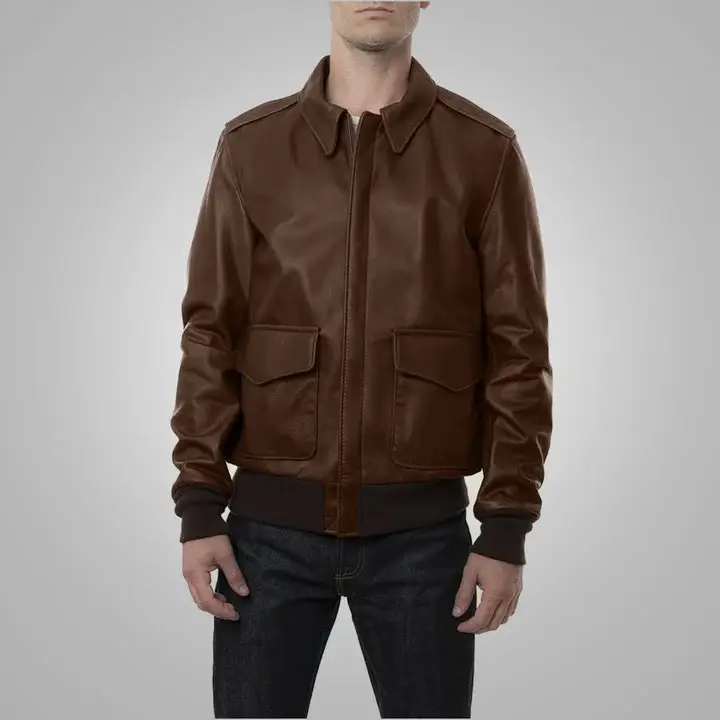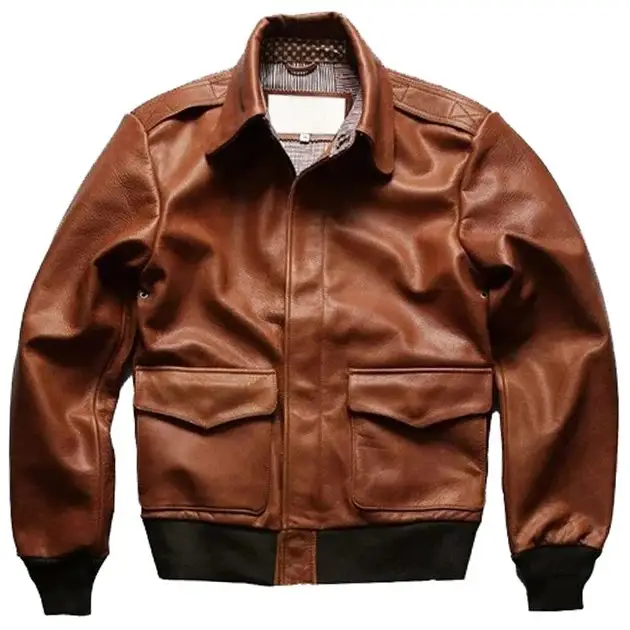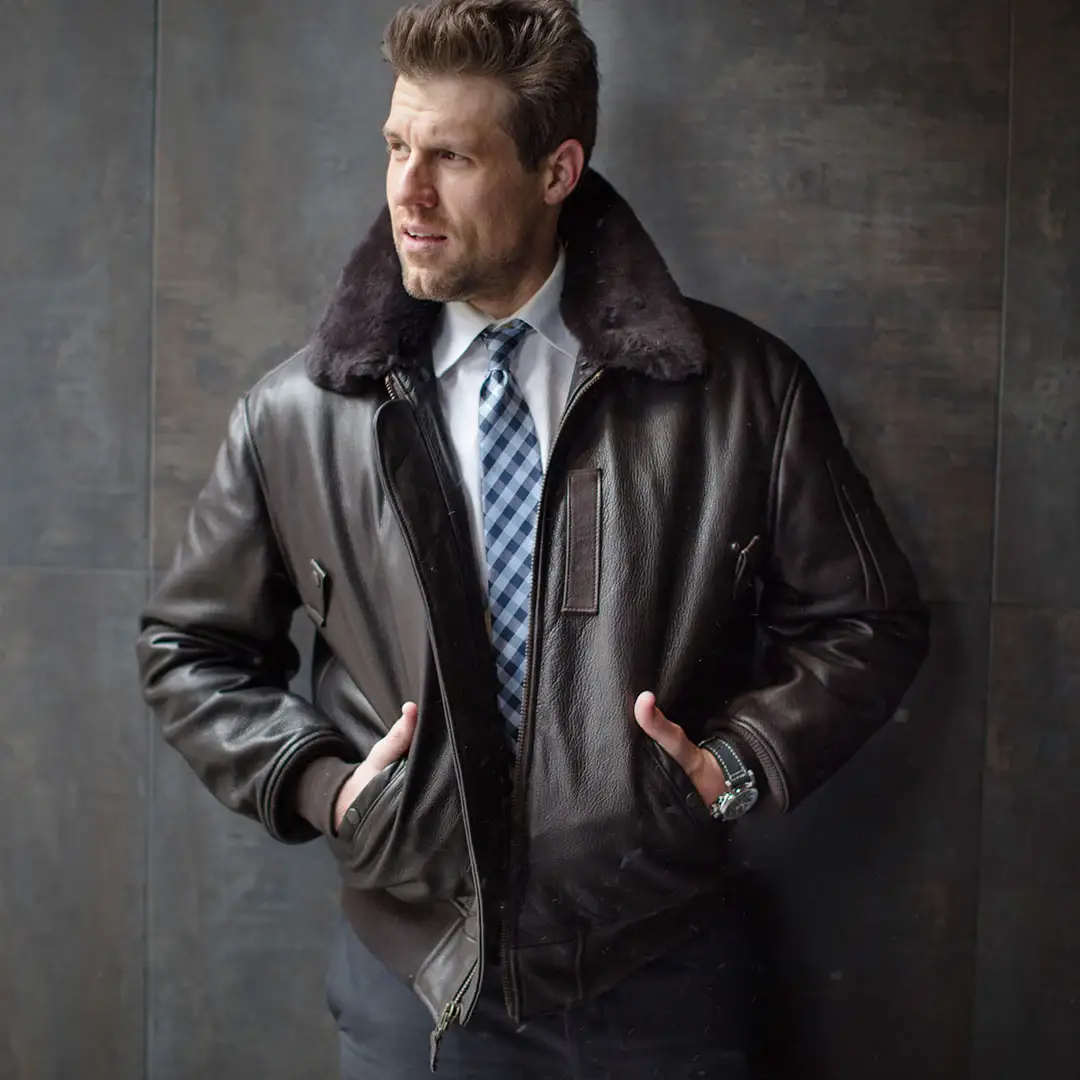How to Clean a Flight Jacket?
Flight jackets are versatile garments known for their durability and style, but the type of material from which they are made significantly influences how they should be cleaned and maintained. Common materials used in the construction of flight jackets include leather, nylon, and various synthetic blends, each requiring unique care routines.
Leather
Leather flight jackets are renowned for their timeless appeal and sturdy nature. However, they demand meticulous care to retain their luster and longevity. Leather is a natural material that is susceptible to moisture, requiring specific cleaning agents designed for leather. Overexposure to water and improper cleaning products can lead to cracking or stiffness in the leather. Using a damp cloth and specially formulated leather cleaners is advisable, followed by conditioning treatments to keep the material supple.
Nylon
Nylon is another popular choice for flight jackets, valued for its lightweight and durable properties. Using mild detergents and cold water, followed by air drying, ensures the material maintains its integrity and appearance.

Synthetic Blends
Synthetic blends, often combining materials like polyester and spandex, offer a balance of flexibility and resilience. These fabrics are typically easier to clean and more resistant to stains and weathering than natural materials. However, it’s crucial to follow specific care instructions to avoid damage.
Understanding the material composition of your flight jacket is paramount before starting the cleaning process. Incorrect cleaning methods can irreparably damage these garments, so always ensure you adhere to material-specific care guidelines. This careful approach will help maintain the quality and durability of your flight jacket for years to come.
Pre-Cleaning Preparation
Before commencing the cleaning process of your flight jacket, it is crucial to undertake several preparatory steps to ensure optimal results and prevent potential damage. The initial step involves meticulously examining the care label sewn into the jacket. This label provides essential information on the manufacturer’s recommended cleaning methods and any specific instructions tailored to the material of the jacket.
Subsequently, gather all the necessary cleaning supplies. Common requirements include a mild detergent, a soft brush or sponge, a clean cloth or towel, and optionally, a specialized leather or fabric cleaner, depending on the jacket’s material. Having all these supplies at hand before starting will streamline the process and prevent unnecessary interruptions.
Prior to cleaning, inspect the jacket thoroughly for any stains, areas of heavy wear, or existing damage. Identifying these spots early on allows for targeted treatment, which can be more effective than a general clean. Delicate or intricate areas, such as seams and zippers, may require special attention to avoid exacerbating wear or accidental tearing.
An essential step in the pre-cleaning process is to perform a spot test. This involves applying a small amount of the intended cleaning product on an inconspicuous area of the jacket to check for any adverse reactions. Monitor the test spot for any signs of discoloration, fading, or material damage.
By following these preparatory steps, you can ensure that your cleaning efforts are both effective and safe for your flight jacket, preserving its durability and appearance. Neglecting these protocols may result in unintended damage or unsuccessful cleaning outcomes.

Cleaning Methods for Different Materials
Cleaning a flight jacket effectively depends heavily on the material from which it is made. Different materials require specific techniques to ensure the jacket maintains its quality and longevity. Below, we outline the cleaning methods for various types of flight jackets.
Leather Jackets
Leather flight jackets demand a delicate cleaning approach to preserve their durability and appearance. Begin by using a specialized leather cleaner. Apply the cleaner with a soft cloth, gently rubbing it in a circular motion. For stains, employ a slightly damp cloth with a small amount of mild soap, but avoid soaking the leather. After cleaning, it is essential to use a leather conditioner to maintain the jacket’s suppleness. Perform a patch test with the conditioner on a small, inconspicuous area beforehand to ensure it doesn’t alter the leather’s color or texture.
Nylon Jackets
Nylon flight jackets are relatively easier to clean.For machine washing, use a gentle cycle with cold water and a mild detergent. To hand wash, fill a basin with cold water and mild detergent, then gently agitate the jacket. For stains, apply a pre-treatment stain remover, letting it sit for a few minutes before washing. Pay extra attention to areas of heavy wear, such as cuffs and collars. Avoid using bleach or fabric softeners as they can damage the nylon fibers.
Synthetic Blends
Synthetic blends, which often include materials like polyester or spandex, require careful cleaning to avoid damage. The general process involves using mild detergents and cold water. Spot clean stains using a soft cloth and a small amount of detergent, ensuring not to over-wet the material to prevent damage. Avoid harsh chemicals and high heat when drying these materials, as they can lead to shrinking or other damages.
Understanding these cleaning methods for different flight jacket materials will help preserve your jacket’s quality, ensuring it remains a staple in your wardrobe for years to come.
Post-Cleaning Care and Maintenance
Position the jacket on a wide hanger to help it retain its form and allow air to circulate freely around it. Avoid using direct heat sources such as radiators or hair dryers, as they can cause the leather to crack or become stiff. Once the leather is dry, it’s essential to restore its suppleness by applying a high-quality leather conditioner. This not only keeps the leather soft but also adds a layer of protection against moisture and wear.
Nylon and synthetic flight jackets, on the other hand, can be more forgiving when it comes to drying methods. As with leather jackets, placing the nylon or synthetic jackets on a wide hanger will help maintain their shape during the drying process. Overheating synthetic materials can lead to a loss of fabric integrity, resulting in diminished quality and longevity.
Regular maintenance between cleanings is equally important in preserving the quality of your flight jacket. Brushing off surface dirt and debris helps prevent the material from degrading over time. Applying protective sprays designed specifically for leather or synthetic fabrics can safeguard against stains and water damage. Finally, when storing your jacket, choose a cool, well-ventilated space and avoid crowding it with other garments that might cause wrinkles or stress on the fabric.
By following these post-cleaning and maintenance tips, you can extend the life of your flight jacket and ensure it remains in excellent condition for years to come.







